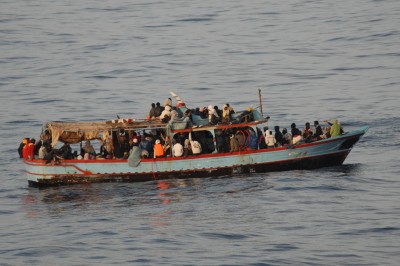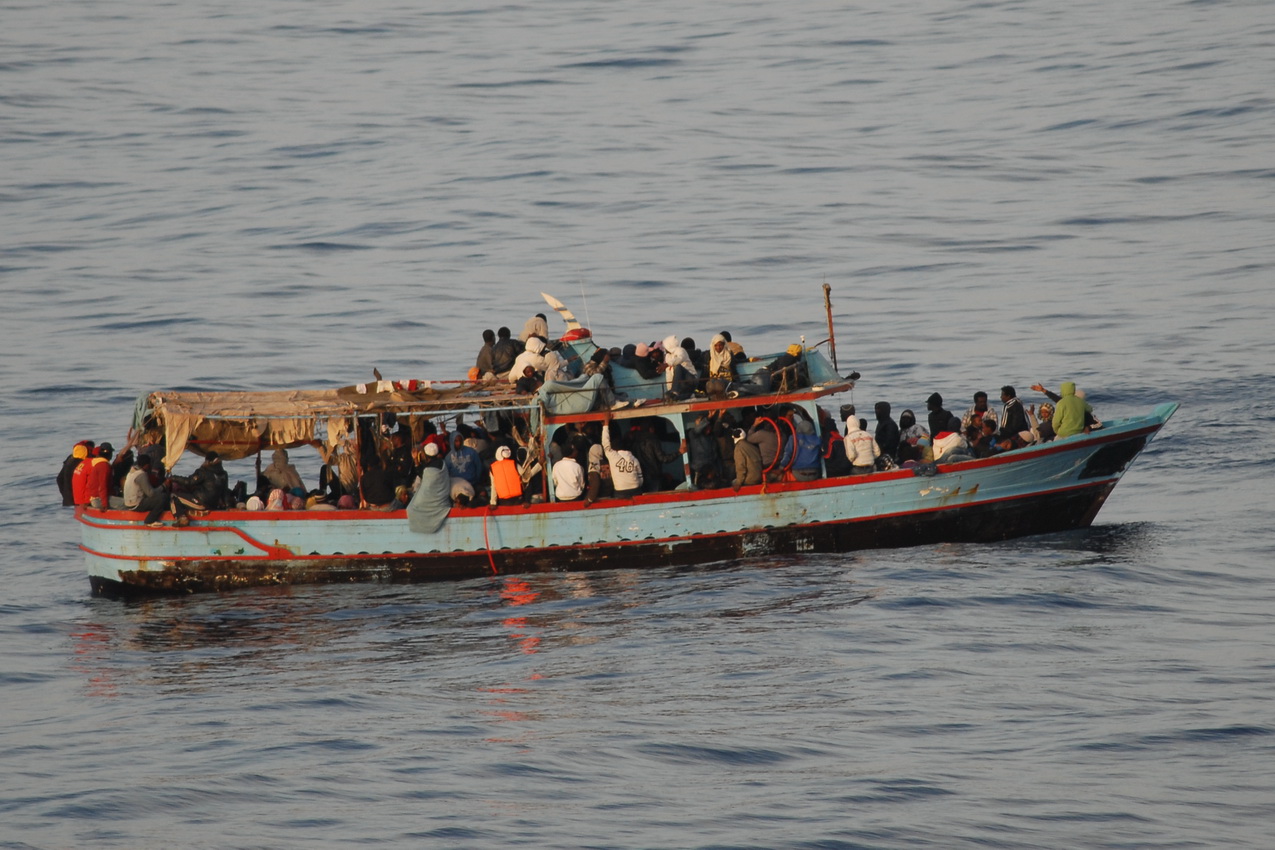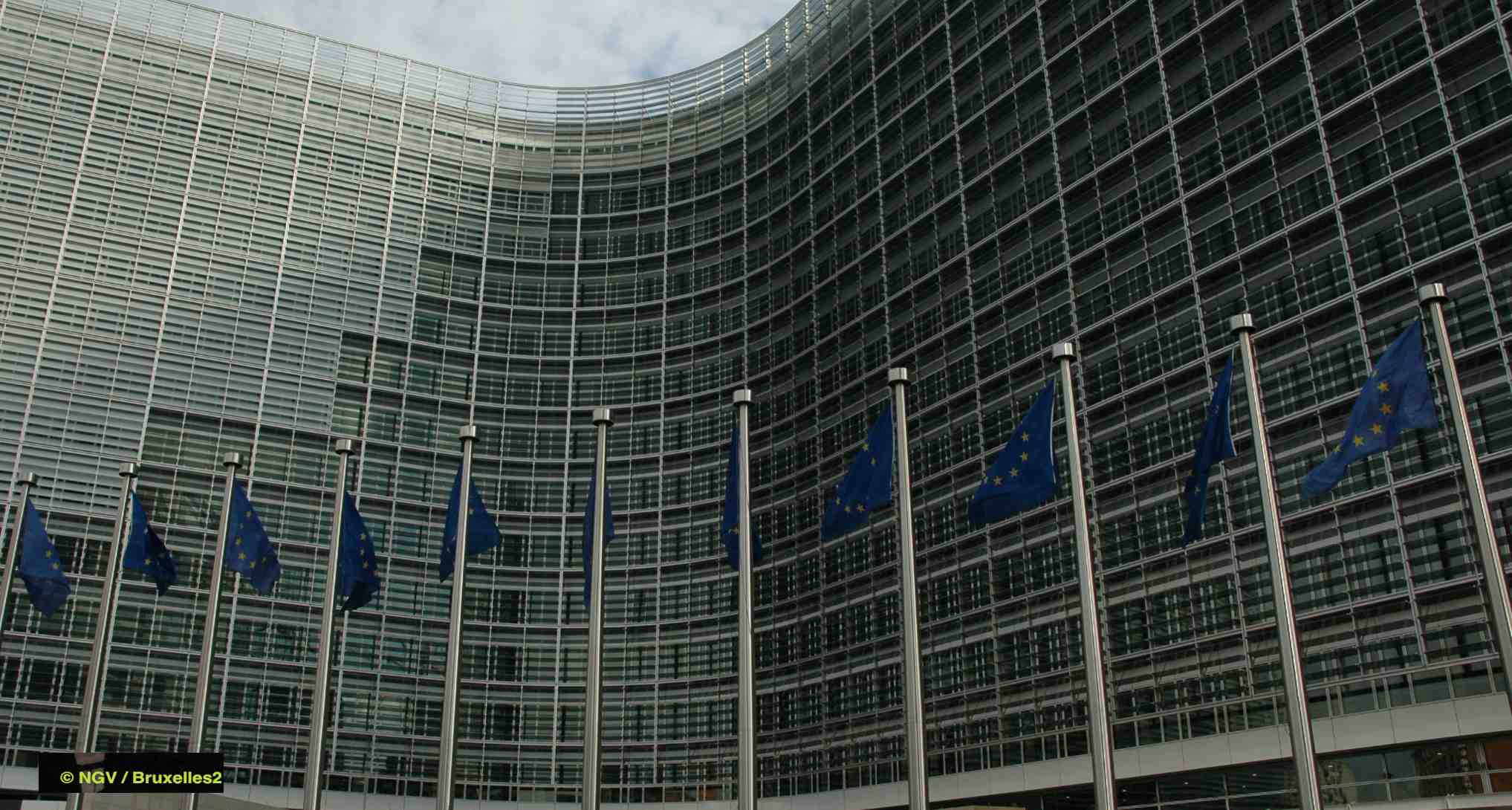“Boat people” in the Mediterranean: NATO denies, the countries pass the buck

(BRUSSELS2) Faced with the tragic wanderings of the boat of African migrants, which left Libya in March 2011, which finally ended in the death of almost all of its passengers (63 out of 72 on board), the officials seem to be slipping away.
Dutch MP Tineke Strik (a member of GroenLinks and also a doctor of international migration law), who wrote the report for the Council of Europe, reconstructed the precise journey of the migrants (read here) and its conclusions are formal. There was no assistance to anyone in danger.
During this wandering - which lasted about ten days, before returning almost to the starting point - the migrants of various African origins first encountered a plane (perhaps French), then a helicopter (of unknown nationality, -to be British) and a military vessel (of unknown nationality) and two fishing boats (one possibly Italian, the other possibly Tunisian). At no time, however, were they rescued and sheltered. For Tineke Strik, there is clearly a responsibility of the forces present in the area, whether civilian or military, under NATO or national command.
A fault if not legal (*) at least moral for not having reacted to the distress signals relayed by the Italian rescue coordination center (Maritime Rescue Coordination Center Rome - MRCC). The report states that "at least two ships involved in NATO operations were in the vicinity": the Spanish frigate Mendez Nunez (F-104) which was 11 miles away and the Italian patrol boat ITS Borsini (P-491) which was 37 miles away. of the States and organizations questioned admitted responsibility.
NATO and the States transfer all responsibility
However, NATO denies having failed in its duty. In a letter addressed to the rapporteur (March 27), the Atlantic Alliance blames the Italian rescue centre. " The request for information contained in the fax sent by the MRCC (...) was not a formal request for assistance or a "distress call" (and was) imprecise" explains Stephen Evans, the Deputy Secretary General for Operations (NB: there may be some doubts about this interpretation, see next §). " Despite this (...) she was transferred to units of the NATO Task Force which were under her operational control » (OpCon) says he.
He also details that of the three Italian ships engaged, only one was in the vicinity, the ITS Borsini 37 miles away. A position not denied by the Italian authorities who claim that their ships have never spotted the boat. Two other Italian ships were under NATO command: the ITS Etna which carried out a Search and Rescue operation on March 26, saving 243 refugees. And was on March 27 155 miles from the position mentioned by the MRCC. " The ship's helicopter has never established contact with ships in difficulty and has never distributed food or equipment to ships with such people on board. he specifies. The other Italian vessel operating in the area was the ITS Garibaldi which was 120/150 nautical miles from the position mentioned.
NATO also denies any unpredictability. The organization mentions regular contacts between SHAPE (the NATO headquarters in Mons) and the various agencies in charge of maritime rescue, in particular the International Organization for Migration and the United Nations High Commissioner for Refugees. He recalls that during Operation Unified Protector, approximately 600 migrants in distress at sea were rescued by NATO, and "much more indirectly"."In all cases, NATO naval vessels did all they could to respond to distress calls and provide assistance when needed." He explains.
On the Spanish side, we deny having received the distress call from either the Italians or NATO, according to the Spanish authorities, who recall that all the Spanish vessels are well aware of their obligations and that they participated in several times in search and rescue operations (including two on March 26 and 27)..."If NATO says there was a message, then they should be able to prove it" declared the Spanish Minister of Defense on this subject. Moreover, in a direct answer to Me Strik of March 6, 2012, the Spanish Minister of Defense denies the fact that the Mendez Nunez was ever 11 miles from the boat in distress.
Multiple alert messages
One can have some doubts about the interpretation of the Deputy Secretary General of NATO in view of the documents provided by the Italian MRCC.
Alerted by the Eritrean priest Zerai who spoke to the refugees on the satellite telephone from their boat, the Italians called back on this number, then the communication being cut off, they asked the satellite operation to locate the boat. Once this location has been made, they launch a qualified "distress" call on the Immarsat-C network.
They also alerted by fax the MRCC in Malta, the HQ of the Frontex operation and the NATO command in Naples. This fax is actually less explicit. But it should be compared to the other messages sent, before and after.
The next day (March 28), they launched a new unequivocal “Hydrolant” alert message, citing a “need for assistance”.
Nb: It should also be remembered that the day of March 26 and 27 was a "horribilis" day for the Italian relief forces. Between March 26 and 28, the Italian authorities faced “to incidents involving some 4300 people – of whom more than 2200 were assisted at sea, and around 2000 rescued in distress ". " During the period in question, the units were working around the clock, recording in a single day between 24 and 24 incidents requiring intervention “says the MRCC of Rome. And the " priority was given to the large number of incidents occurring in the SAR zone of Italy rather than those occurring elsewhere”.
Charles de Gaulle involved? Denial of the French
Two facts are particularly worrying and remain unexplained: a particularly disturbing point (...) is the worrying absence of intervention on the part of a military helicopter and a large naval vessel to rescue the boat after these units crossed it and entered contact with him. Indeed, survivors agree that "they drifted very close to a very large military ship - possibly an aircraft carrier or at least a ship with helicopter facilities". The Guardian had mentioned the French aircraft carrier Charles De Gaulle in its first article, which revealed the whole affair in May 2011. A complaint against X was also filed on April 11 before the High Court. instance of Paris, in its specialized training in military matters, by groups for the defense of immigrants, including the Gisti in France (read here - download the text of the complaint) for failing to rescue persons in danger ". " It will be up to French justice to shed light on the responsibility of the French army which, engaged in Libya to protect the civilian population, failed to come to the aid of these exiles explains the NGO.
This hypothesis was immediately denied by the French: "The Charles-de-Gaulle has never been less than 200 kilometers from Tripoli, while they announce this boat 60 nautical miles, or 110 km, from Tripoli"explained a spokesperson for the French army. In his response to Mrs. Strik on March 5, 2012, the French Minister of Defense, Gérard Longuet, declared that the only French ship to have crossed a migrant boat at the given time was the Meuse, a supply vessel. But the position did not correspond to that given by the Italian MRCC and the boat in question "was not in trouble ".
In addition, a military helicopter reportedly came to meet the refugees and sent them biscuits and water, then left, never to return. It could be a Lynx from the British Army, according to an independent report (requested by the NGOs which are about to file a complaint) carried out by researchers at the University of London. No response from the British Ministry of Defense for the moment.
The EU kicks in touch, the United Kingdom and the United States to absent subscribers
The investigation is not over,”additional information is also requested from NATO and the member states involved", in particular on the question of the "ghost" ship and helicopter. A number of States (Canada, France, Greece, Italy, Romania and Turkey) replied to the rapporteur, "indicating that they had no ship military in the sector during the specific period in question." The Italian ministry referred to NATO. " The UK and the US have yet to respond. ". Rather surprising for a country which has undoubtedly leaked (false?) information on Charles de Gaulle.
As for the European Union, it was questioned through the Frontex Agency and on satellite data. But it kicks in touch... The director of Frontex, Ilkka Laitinen, considers that it is "difficult to provide the" exact positions of the ships between 22 ars and 10 april because they were moving all the time » ; in doing so he only denies that they could have been in the area. He prefers to recall that during the EPN Hermès 2011 operation, 23.192 migrants in distress were saved during 241 search and rescue actions. With regard to the European Satellite Center (EUSC), " he has no data available as the EUSC was busy collecting information on the humanitarian situation on the borders with Tunisia and Egypt and around the ports of Janzour and Tripoli replied Catherine Ashton, the High Representative in a letter dated March 19, 2012. She also advises to turn to NATO because “ the entire area within 130 km of the Libyan coast was during this period (covered) by NATO's "Unified Protector" operation".
(*) The boat was apparently largely in the Libyan search and rescue (SAR) zone and, according to maritime law, it was up to the Libyan center to coordinate the rescue. As for the UN resolution, it does not proclaim a maritime exclusion zone at sea - under international control - unlike at the air level. The sea therefore remained under Libyan and not international control.
To be continued : the path of the cursed ship - some lessons to learn...
Read also:





